ESSENTIAL RECOMMENDATIONS
Blue Economy as a Driver for Sustainable Development
The green transition and the development of a blue economy are not only global trends but also consistent policies of the Party and the State of Vietnam, as affirmed in Resolution No. 36-NQ/TW (2018) regarding the Strategy for Sustainable Development of Vietnam's Marine Economy by 2030, with a vision towards 2045. This is particularly important as the "brown" marine economy is becoming an obstacle to sustainable development in the context of the complex and unpredictable climate change and the situation in the East Sea...
Green Transition and Blue Economic Development
The green transition and the development of a blue economy are not only global trends but also consistent policies of the Party and the State of Vietnam, as affirmed in Resolution No. 36-NQ/TW (2018) regarding the Strategy for Sustainable Development of Vietnam's Marine Economy by 2030, with a vision towards 2045. This is particularly important as the "brown" marine economy is becoming an obstacle to sustainable development in the context of the complex and unpredictable climate change and the situation in the East Sea. Thus, sustainable marine economic development must be based on green growth, promote the unique cultural values of the sea in Vietnam, and successfully implement three strategic breakthroughs: developing a sustainable marine economic framework, advancing marine science and technology, and enhancing education and training for marine human resources, along with a multifunctional infrastructure system.
Context of Vietnam's Seas
Vietnam's seas are an essential part of the East Sea, bordered by China to the north, the Gulf of Thailand to the southwest, the Philippines to the east, and Brunei and Malaysia to the south. The sea covers about 1 million square kilometers, three times the area of the land, and includes nearly 3,000 islands and the Hoang Sa and Truong Sa archipelagos. The resources in Vietnam's seas play a crucial role in socio-economic development and ensuring national security. Initial exploration and utilization of marine space have shown effectiveness, contributing to national socio-economic development and sustainable growth. From 2011 to 2022, marine sectors significantly contributed to the national economy; GDP in 28 coastal provinces averaged around 50%. The average income per person in coastal areas reached about 97 million VND in 2022, higher than the national average. Island economies have fundamentally transformed and become a solid defense line protecting national sovereignty over the sea and islands.
Challenges and Bottlenecks
Despite achieving many successes, several goals in the Party's and State's policies regarding the sea have not been met; the potential and advantages of the marine economy are not fully utilized. There are several issues in the integration between coastal regions, and between coastal and inland areas, as well as across various related sectors, which are often ineffective and lack coherence. Conflicts and overlaps exist in the development of marine economic activities. Geological disasters, environmental pollution, and ecosystem degradation pose increasing risks due to climate change and rising sea levels. The integrated and unified management system for seas and islands has not operated smoothly and effectively.
Key Policy Bottlenecks in Developing a Blue Economy
- Institutional and policy bottlenecks:
- National criteria for a prosperous and strong marine economy need to be institutionalized.
- There is a lack of harmonization of interests among stakeholders due to limited marine space and scarce resources. Policy frameworks often avoid addressing these issues.
- There is a need for a scientifically sound and rational marine spatial planning.
- Awareness bottlenecks:
- There is insufficient awareness of the role and importance of the sea in economic development and national security.
- A lack of understanding regarding the concept of a prosperous and strong marine nation.
- Local understanding of marine economic development linked with environmental protection, climate change response, and national security is often inadequate. For example, local proposals to reduce marine protected areas conflict with resource protection.
- Science and technology bottlenecks:
- A foundation for effective marine governance is essential; however, there is a lack of timely and comprehensive information systems to manage rapidly changing marine environments.
Vietnam's seas and islands are sacred territory, holding significant importance in the nation's construction and defense efforts. Protecting national sovereignty over these areas and developing a sustainable marine economy are the collective responsibilities of the Party, the people, and the military, aimed at making Vietnam a strong and prosperous nation from its marine resources.
Forecast of the situation
The transition to green and the development of a blue economy is not only a global necessity but also a consistent policy of Vietnam’s Party and State, affirmed in Resolution No. 36-NQ/TW (2018) on the Sustainable Development Strategy for Vietnam's Marine Economy until 2030, with a vision for 2045. This is especially important as the "brown" marine economy is becoming a barrier to sustainable development in the face of the complex and unpredictable impacts of climate change and the situation in the East Sea. Sustainable development of the marine economy must be based on green growth, promoting the unique cultural values of Vietnam's marine heritage. It requires the successful implementation of three strategic breakthroughs: institutional development for the sustainable marine economy, marine science and technology, and education and training for marine human resources, alongside a versatile infrastructure system.
The development of a blue economy necessitates a comprehensive approach to various specific aspects, including: preserving marine natural resources, ensuring marine environmental security, changing human behavior towards islands and seas, unified state management of marine and island resources, spatial planning and management of marine areas, and effectively expanding protected marine areas. Additionally, it is crucial to leverage the unique cultural values of Vietnam's marine heritage as a driving force for sustainable marine economic development, fostering international cooperation and promoting sustainable marine economic development.
The green transition in the sustainable blue economy in our country is also directly affected, both in the short and long term, by activities related to the exploitation and use of seas, islands, and coastal areas. The values of our marine and island resources have not yet been effectively utilized; some resources are declining and degrading; marine environments continue to be polluted by untreated discharges, primarily from land sources. The environmental security of the South China Sea and our waters is under potential threat due to unfriendly human behavior; natural marine resources have not been preserved and are being depleted at significant rates; the methods of exploiting marine and island resources in various sectors remain outdated; and the development of science and technology, especially marine technology, is not commensurate with potential, showing signs of lagging behind global and regional standards.
Policy recommendations
- Integrated management of marine and island resources:
- Linking marine economic development with national defense and security:
- Public awareness and communication:
- Combining national and global strengths to protect sovereignty:
- Measures against illegal, unreported, and unregulated (IUU) fishing:
- Promote the rational and efficient use of marine resources.
- Mitigate environmental degradation and pollution in marine and coastal areas.
- Develop economic tools and coastal planning.
- Adapt to climate change and oceanic changes.
- Encourage renewable marine energy development.
- Organize economic spaces in marine areas.
- Advance marine science and technology.
- Effectively manage marine protected areas.
- Ensure Vietnam's maritime security and sovereignty.
- Enhance socio-economic development in coastal and island regions while ensuring defense and security.
- Strengthen international cooperation related to maritime sovereignty.
- Build community trust in coastal areas.
- Ensure the quantity and quality of human resources.
- Address social welfare effectively.
- Increase human and budgetary resources for marine and island awareness campaigns.
- Utilize media effectively to promote sovereignty and sustainable development.
- Enhance international outreach and cooperation for sustainable marine development.
- Diversify communication methods, especially through digital platforms.
- Firmly protect maritime sovereignty while promoting peaceful dispute resolution.
- Focus on managing disputes effectively to build trust and prevent conflict.
- Pursue an independent and multi-faceted foreign policy to garner international support.
- International integration is key to early protection efforts.
- Implement directives and resolutions on IUU fishing strictly.
- Strengthen local and national coordination to combat IUU fishing effectively.
- Conduct rigorous monitoring of fishing activities through advanced tracking systems.
- Ensure compliance with fishing regulations and improve licensing processes.
- Enforce strict penalties for violations and improve traceability of seafood products.
These recommendations aim to promote sustainable marine economic development while safeguarding national interests and ensuring environmental protection.
OTHERS
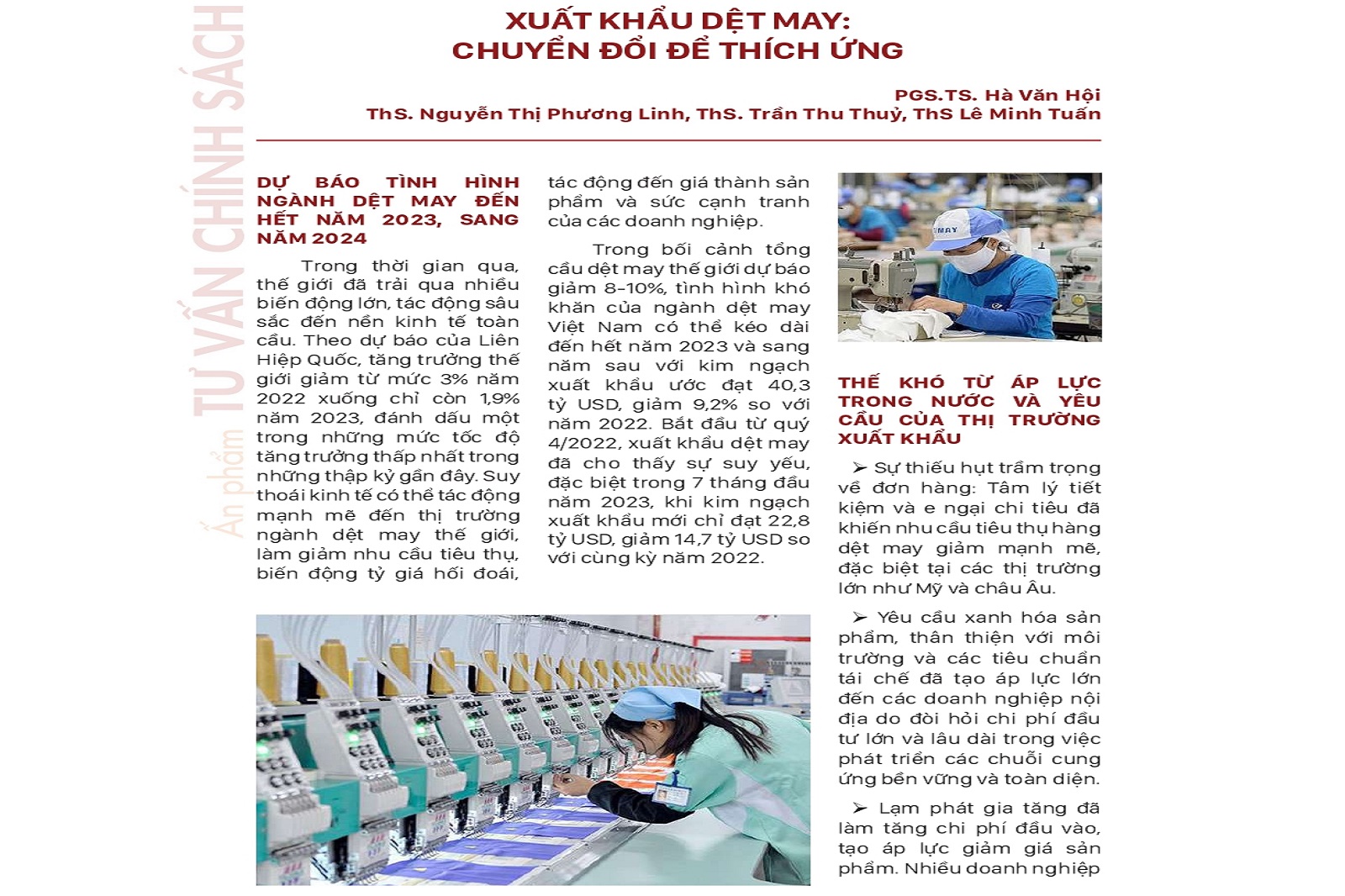
Textile and Garment Exports: Transforming to Adapt
Recently, the world has experienced significant upheavals that have profoundly impacted the global economy. According to UN forecasts, global growth is ...
More details
Promoting Vietnam-Australia Agricultural Trade in the Context of Implementing Free Trade Agreements
Australian imports are increasingly well-received by Vietnamese consumers. Australia is becoming a reliable supplier for Vietnam's production needs, providing ...
More details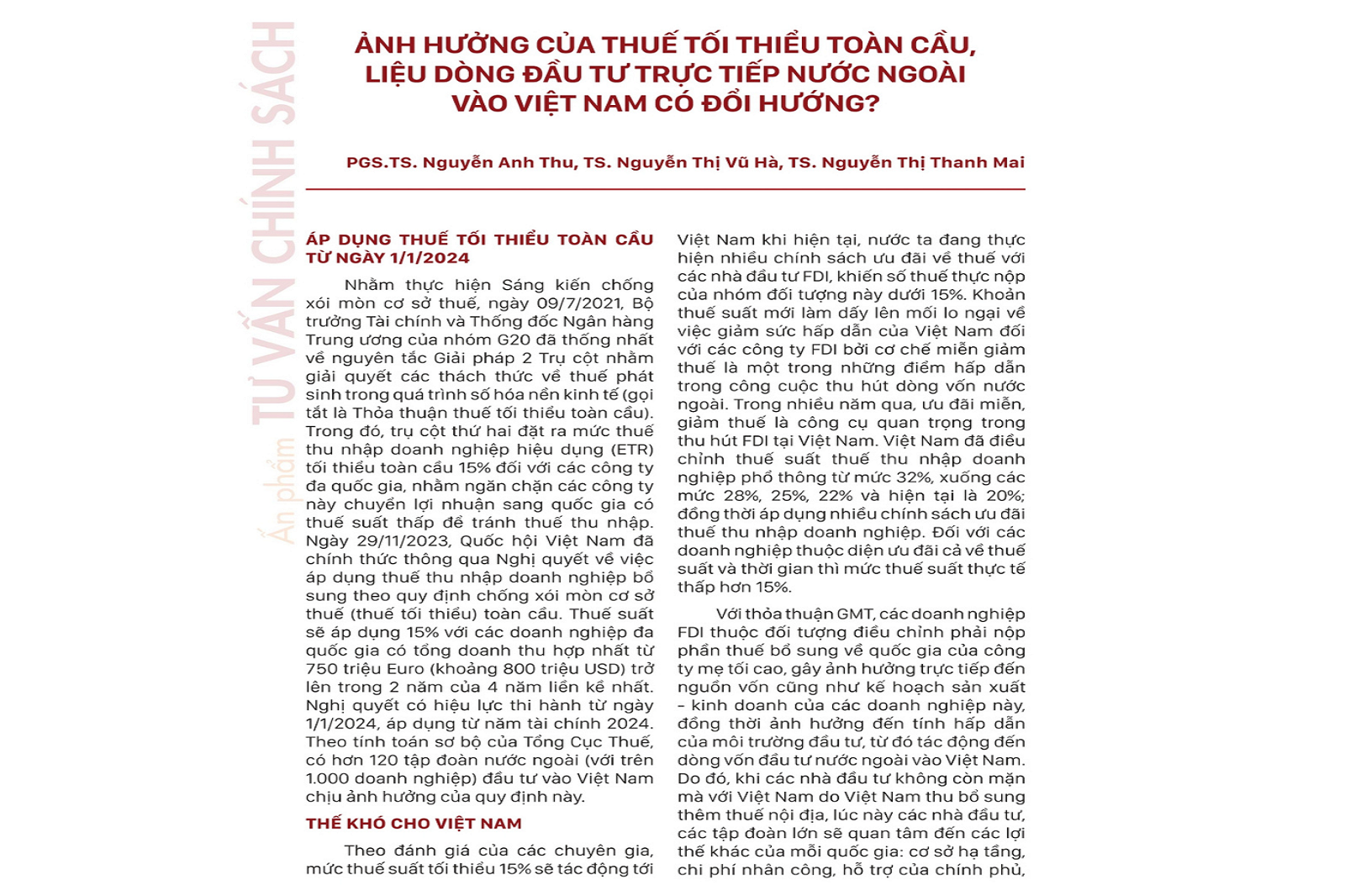
Will the Implementation of Global Minimum Tax Redirect Foreign Direct Investment into Vietnam?
To combat base erosion and profit shifting, on July 9, 2021, finance ministers and central bank governors of the G20 agreed on the principles of the Two-Pillar ...
More details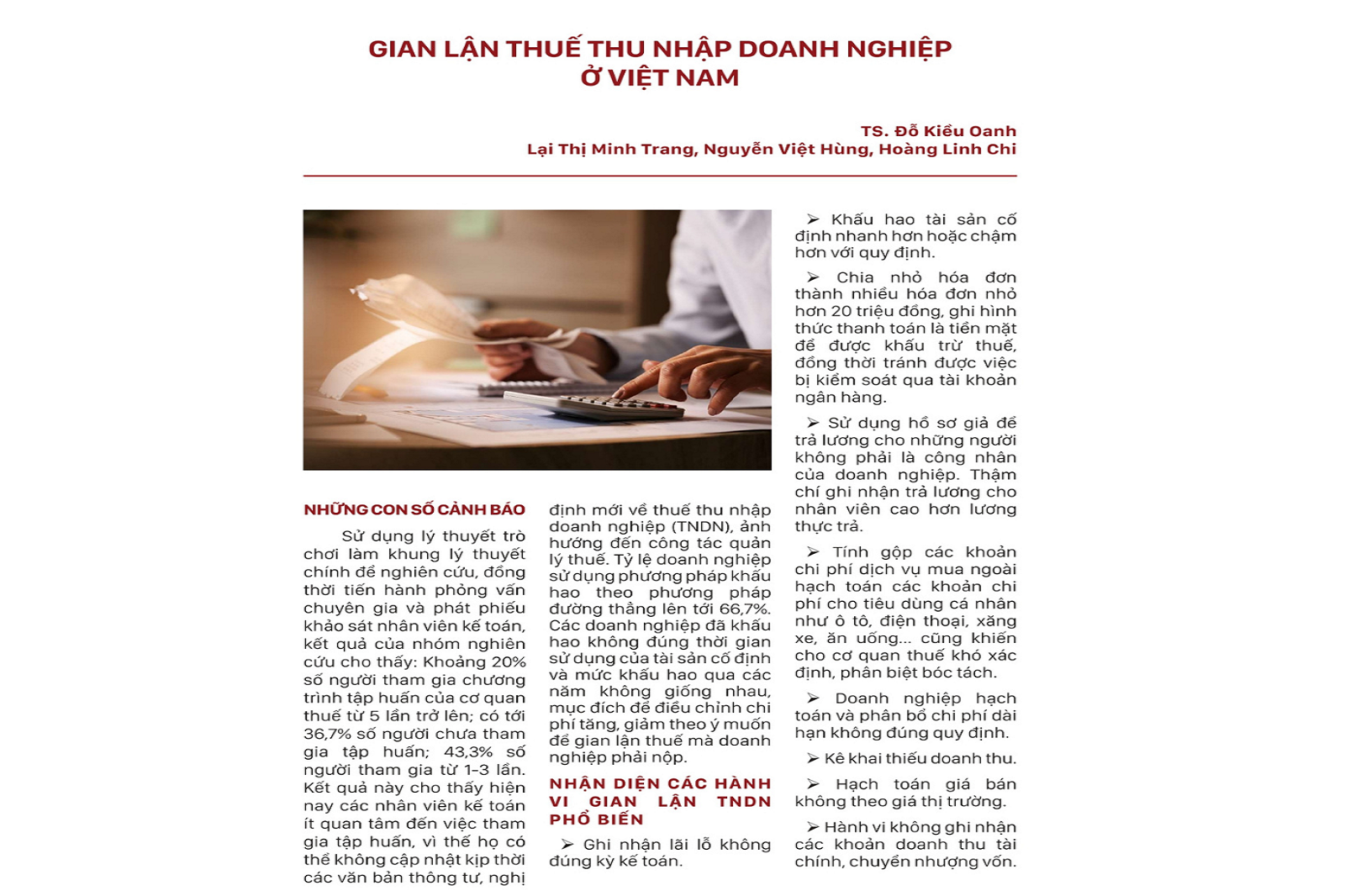
Corporate Income Tax Fraud in Vietnam
Using game theory as the main theoretical framework for the study, along with expert interviews and surveys of accountants, the research team found that ...
More details
Provisioning by Banks During the COVID-19 Pandemic
Provisions for loans are crucial for the stability of banks as they serve as a safety "buffer" to mitigate the risks of defaults and systemic risks in ...
More details
ASEAN Economic Cooperation Forum and Emerging Economies with the Russian Federation in the New Context: Issues and Prospects
Today, international economic cooperation between countries faces significant challenges. The trade volume between Russia and Vietnam, as well as between ...
More details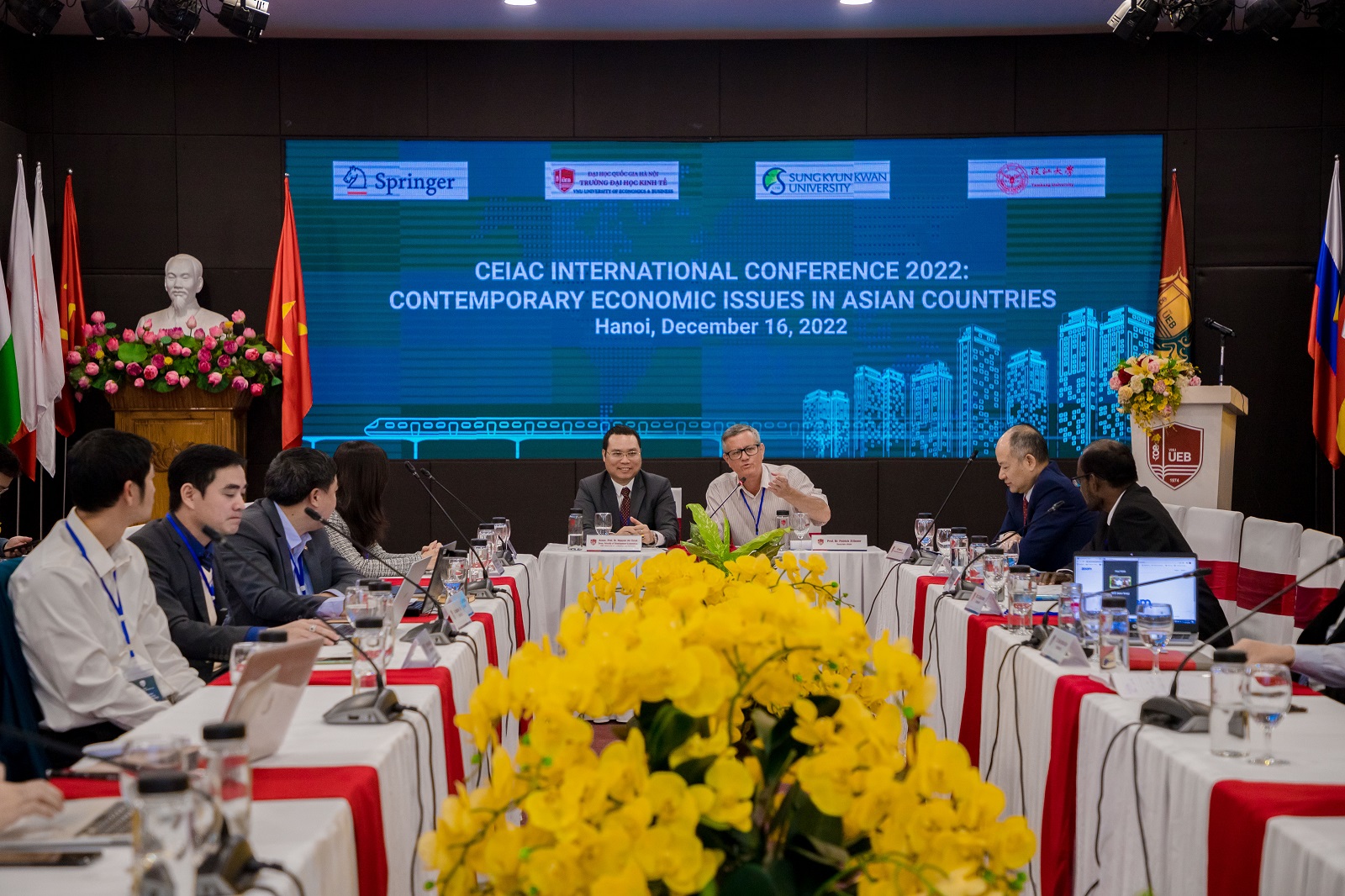
Contemporary economic issues in Asian countries
On December 16, 2022, UEB organized the international workshop “Contemporary Economic Issues in Asian Countries” (CEIAC 2022) to enhance scholarly and ...
More details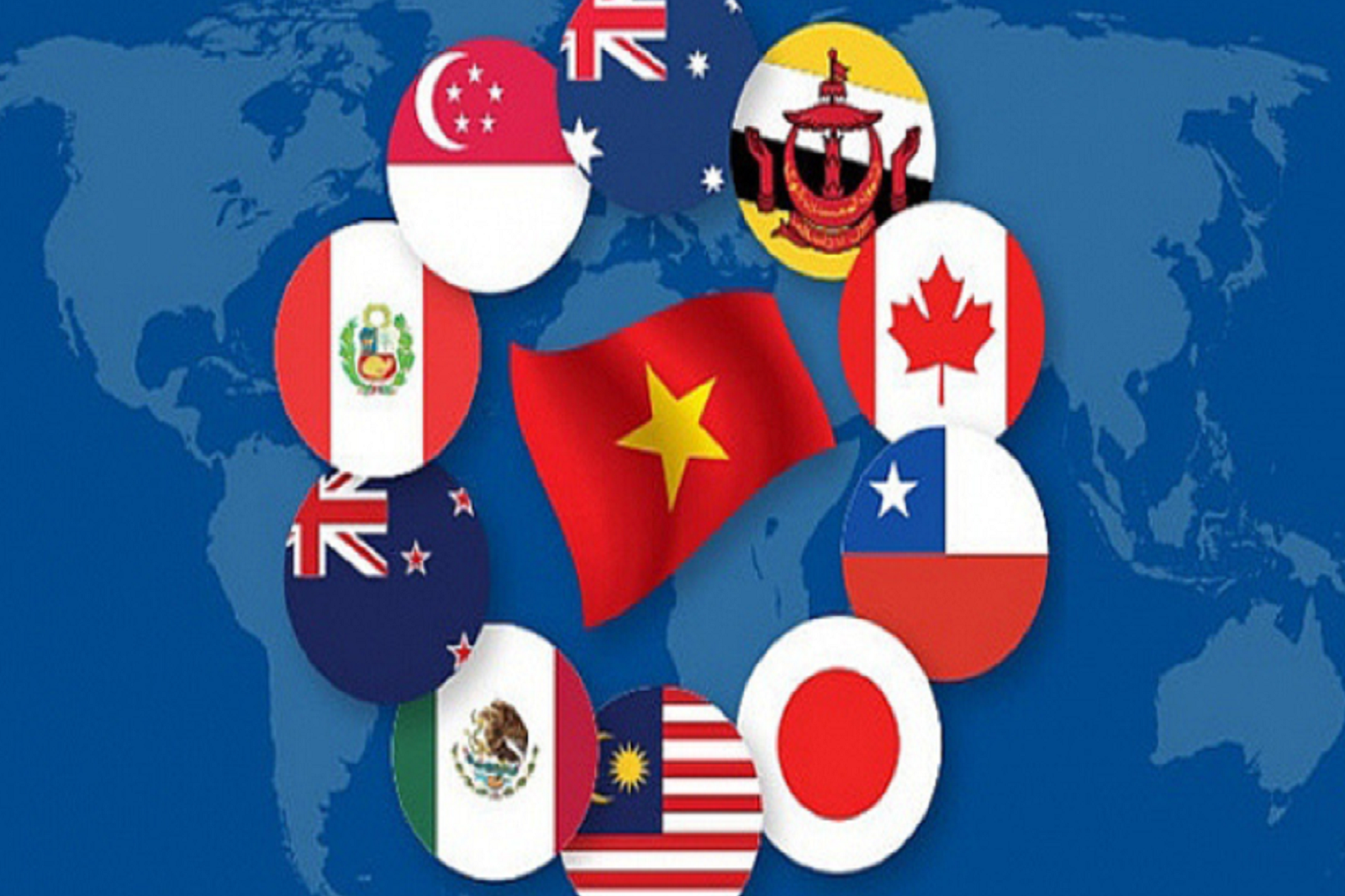
Regional economic integration and its impact on businesses
Research revealed how free trade and competition enhance the efficiency of businesses and economies. Import competition drives firms to increase productivity, ...
More details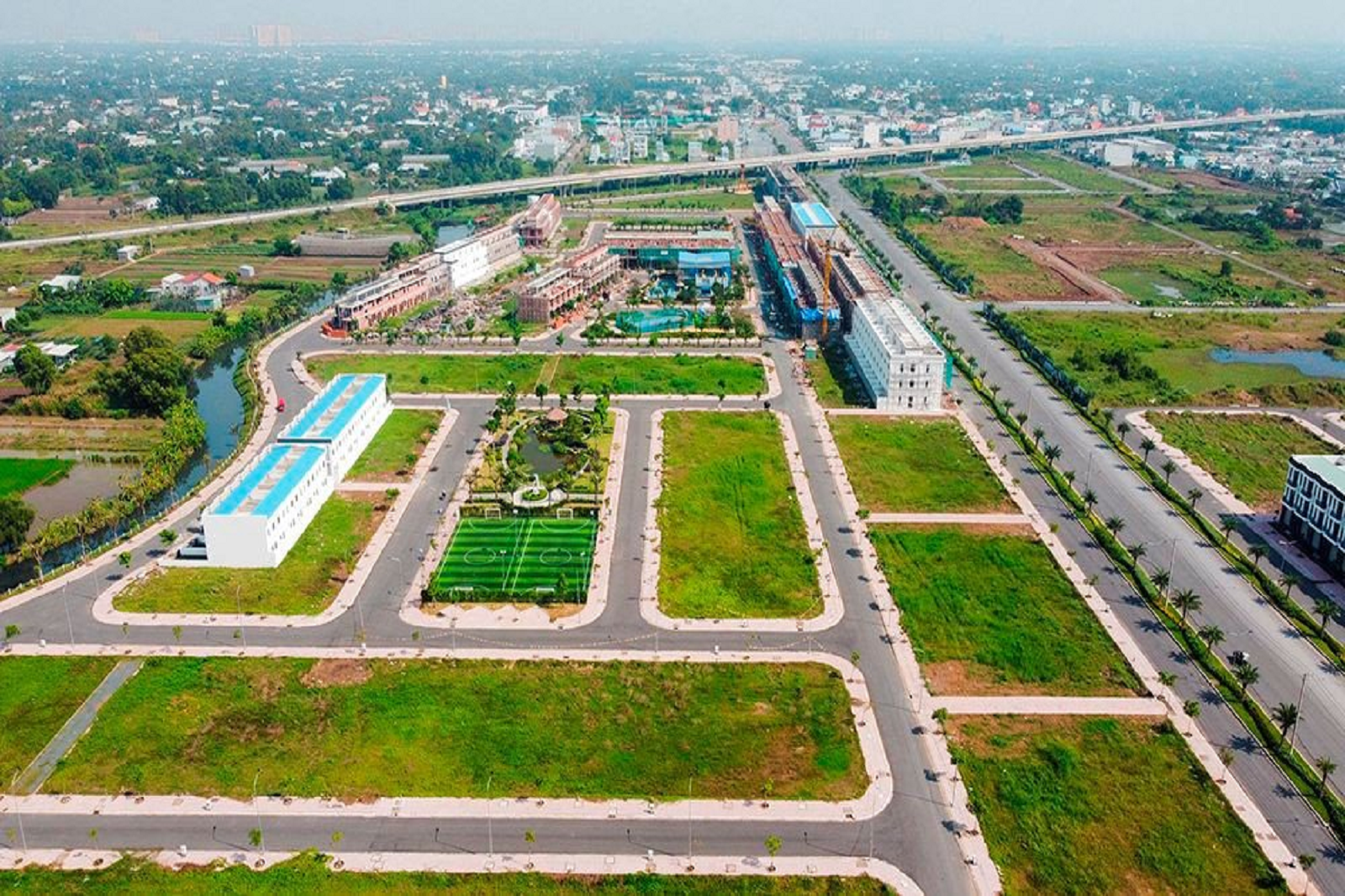
Completing land pricing policies in Vietnam
The Land Law 2013, Decree No. 44/2014/NĐ-CP on land prices, and Circular No. 36/2014/TT-BTNMT detailing land valuation methods, construction, adjustment ...
More details